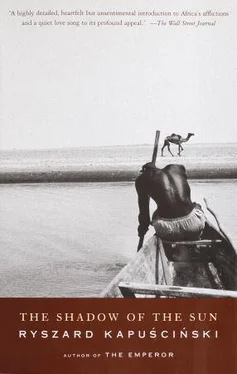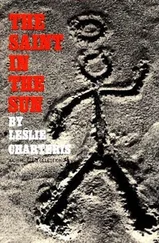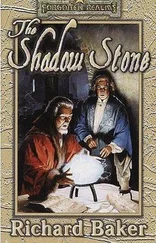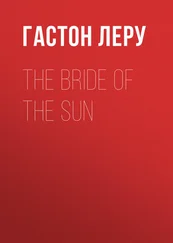What’s most shocking and astonishing is the monstrous quantity of everything, the improbable accumulation, the piles of hundreds of thousands of machine guns, mountainous-terrain howitzers, military helicopters. All of this wended its way for years by sea from the Soviet Union to Ethiopia, Brezhnev’s gift to Mengistu. Not even a tenth of these armaments could actually be operated by people in Ethiopia. Why, with this many tanks, you could conquer all of Africa, and with fire from all these guns and rocket launchers reduce the continent to ashes! Roaming through the still streets of this city of motionless steel, where dark, rusty barrels stared at me from everywhere and around whose every corner caterpillar tanks bared their massive metal teeth, I thought about the man who, dreaming of conquering Africa, of staging on this continent a showpiece blitzkrieg, constructed this military necropolis. Who could this have been? Moscow’s ambassador to Addis Ababa? Marshal Ustinov? Brezhnev himself?
“And did you see Tira Avolo?” Aforki asked me once. Yes, I saw Tira Avolo. It is one of the wonders of the world. Asmara is a beautiful city, with an Italian, Mediterranean architecture and a delectable climate — an eternal warm and sunny spring. Tira Avolo is Asmara’s luxurious residential neighborhood. Magnificent villas submerged in flowering gardens, royal palms, tall hedges, swimming pools, lush lawns and decorative borders, an inexhaustible parade of plants, colors, and scents — a veritable paradise on earth. When the Italians left Asmara in the course of the war, Tira Avolo was taken over by Ethiopian and Soviet generals. No Sochi, Sukhumi, or Gagra can rival Tira Avolo in climate and comfort. So half the High Command of the Red Army, having been forbidden access to the Côte d’Azur or Capri, spent their holidays in Asmara, simultaneously helping Mengistu’s forces fight the Eritrean guerrillas.
The Ethiopian army regularly used napalm. To protect themselves, the Eritreans dug shelters, camouflaged corridors, and secret hiding places. With time, they had constructed a second, underground country — literally underground, a clandestine, covert Eritrea, impenetrable to strangers, which they could traverse from one point to another undetected by the enemy. The Eritrean war, they themselves proudly emphasize, was no bush war, no destructive and wasteful spasm of plunder whipped up by warlords. In their underground state they had schools and hospitals, courts and orphanages, workshops and gunsmiths. In a country of illiterates, each warrior had to know how to read and write.
The Eritreans’ pride and achievement is now their problem and their drama. The war ended in 1991, two years later Eritrea became an independent nation, and now this small country, one of the poorest in the world, has a hundred-thousand-strong army of young, relatively well-educated people it doesn’t know what to do with. Eritrea has no industry, agriculture is devastated, the towns are in ruin, the roads wrecked. One hundred thousand soldiers awake each morning with nothing to do; most important, they have nothing to eat. And it’s not just the soldiers. The fate of their civilian friends and brothers is similar. All you have to do is walk through the streets of Asmara during dinnertime. The officials of the fledgling nation’s few institutions are hurrying to little neighborhood restaurants and bars for a bite to eat. But the crowds of young people have nowhere to go — they don’t work and are penniless. They walk around, peer into shop windows, stand on street corners, recline on benches — idle and hungry.
The bells of the cathedral fall silent, the muezzin’s voice ceases calling, a fiery, blinding sun emerges from behind the mountains of Yemen, and our bus — an ancient Fiat whose body has been so corroded by rust and so often knocked and hammered that it is impossible to determine its color — sets off, rushing downhill past steep little fields from 2,500 meters above the sea. I can scarcely bring myself to describe this journey. The chauffeur seats me, the only European, next to him. He is a young, intelligent, and careful driver. He understands this road, knows its deadly traps. There are several hundred turns along the one-hundred-kilometer route — in fact, the entire road is just turns and bends, and, moreover, the narrow track, which is covered with loose gravel, runs the entire time above formidable precipices, without any protective railings or safeguards.
At many a turn, if you don’t suffer from fear of heights, you can look down and see lying far, far below you, at the bottom of the chasm, the shattered remains of buses, trucks, armored vehicles, and the skeletons of all sorts of beasts — probably camels, perhaps mules or donkeys. Some are already very old, but others — and it is those that are most disturbing — are quite fresh. The driver and his passengers are in sync, clearly a well-practiced and smoothly functioning team: when we enter a turn, the driver calls out a protracted “Yyyaaahhh!” and at this signal the passengers lean in the opposite direction, giving the bus the counterweight it needs to keep from plunging headlong into the abyss.
Every now and then we come upon a brightly colored Coptic altar at a bend, decorated with ribbons, artificial puffy flowers, and naively painted icons, with several skinny, desiccated monks milling about. When the bus slows down on the turn, they hold clay bowls up to the windows, into which the passengers can throw offerings of some pennies. The monks will pray for their safe journey — safe at least until the next bend.
Every kilometer reveals different vistas, a different landscape emerges from behind each mountain; ever new panormas compose themselves before our eyes, the earth showing off the abundance of its charms, wanting to overwhelm us with its beauty. Because, indeed, this road is at once terrifying and beautiful. Down below, a village submerged in flowering shrubs; there, a monastery, its pale walls shining against the black of the mountains like a white flame. Over there, a gigantic, one-hundred-ton boulder, split in half as neatly as if by a thunderbolt — and thrust into the middle of a green pasture. Somewhere else, fields of loose stones, sparsely, carelessly scattered about — but in a certain spot these stones are more concentrated, lie nearer one another, nearer and neater: the sign of a Muslim cemetery. Here, as in a classical landscape painting, a rapid stream glitters with silver; over there, massed cliffs create heaven-grazing gates, convoluted labyrinths, immense columns.
As we descend lower and lower, constantly spinning around on the frenzied carousel of turns, ever balancing on the border between life and death, we feel it getting warmer, and then very warm, even hot, until finally, as though we’d been tossed with a giant shovel, we are thrust into a blazing furnace — Massawa.
First, though, several kilometers before the city, the mountains end and the road runs straight and level. At this point, the driver is transformed: his slim silhouette goes limp, his facial muscles relax, and his expression becomes gentler. He smiles. He reaches for a stack of cassettes lying next to him and snaps one into the tape player. From the scratched, gravelly recording comes the hoarse voice of a local singer. The melody is Eastern; there are many high, yearning, sentimental tones in it. “He is saying that she has eyes like two moons,” the driver explains to me. “And that he loves those moonlike eyes.”
We enter the ruined city. On either side of the road, mountains of artillery shells. The walls of burned houses, and broken, splintered tree trunks. A woman is walking down an empty street, two boys are playing in the cab of a demolished truck. We arrive at a sandy rectangular square in the center of town. All around, shabby single-story houses painted green, pink, and yellow, the façades cracked, the paint peeling and falling. In one corner, in a spot of shade, three old men are napping. They are sitting on the ground, their turbans pulled down over their eyes.
Читать дальше












